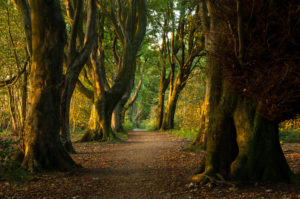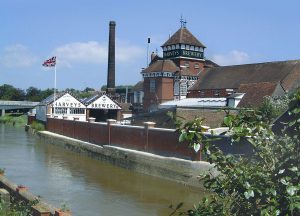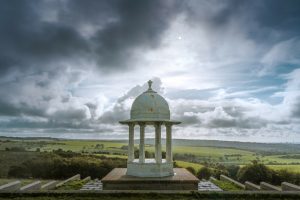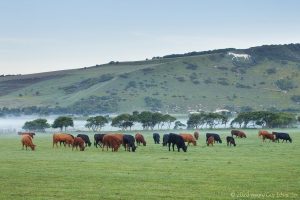Best Autumn walks in East Sussex
August 22, 2023
Misty mornings, the crunching of leaves under your feet, even a faint chill in the air, Autumn has a lot going for it.
There’s no better way to embrace the season than a walk in the countryside.
Here are just some of the walks to get you outside in the South Downs this Autumn.
Stanmer Park Circular – 6 miles

Stanmer Park has a wealth of history to discover. It is thought that the word Stanmer comes from the Anglo-Saxon words ‘stan’ and ‘mere’ which mean ‘stone’ and ‘pond’.
Archaeology shows that Stanmer Park has had human activity since Neolithic times with the Great Wood containing Bronze Age barrows, tumulus and a cross ridge dyke (a prehistoric land boundary).
The church, the village and the manor house stand on sites of much earlier versions of themselves, with some of the building materials being reused in the current buildings.
While you are at Stanmer Park, pop in to see One Garden Brighton; a rediscovered walled garden now open to the public and free to visit.
Managed by Plumpton college, the garden celebrates both heritage and innovation, including productive traditional fruit and vegetable crops as well as a series of contemporary show gardens.
Check out the full walk with directions.
Lewes Rail to Ramble Circular – 6 miles

Starting off from Lewes Railway Station, this six mile circular will take you through the heart of Lewes, past Cliffe Bridge and Harvey’s Brewery, before climbing the steep path through Offham Chalk Pits.
A hive of industrial activity during the 18th and 19th century. Here, the raw chalk of the South Downs and the River Ouse meet and both were part of the great chalk pit and lime industry which has shaped the landscape we see today.
The trail will continue to take you along a path towards the old race course and back toward Landport Bottom, the site of the Battle of Lewes.
On the walk back towards town, why not stop into one of Lewes’ numerous historical pubs for a tipple of the local beverage?
Check out the full walk with directions.
Chattri War Memorial Circular – 4 miles

During World War I (1914–18), Indian soldiers were hospitalised in the Royal Pavilion in Brighton.
The Hindus and Sikhs who died were cremated on the Downs and in 1921 the Chattri memorial was built on the cremation site.
The word Chattri means ‘umbrella’ in Hindi, Punjabi and Urdu, symbolising the protection offered to the memory of the dead.
Starting from the Ladies Mile pub in the north Brighton community of Patcham, this walk will take you over ancient field systems known as lynchets.
The ‘terrace’ patterns found in the landscape were formed by Iron Age ploughs some 2500 years ago and are still very visible today, especially in the Autumn months when the grasses are shortage and the landscape begins its retreat into winter.
Check out the full walk with directions.
Alfriston and the Cuckmere Valley – 7 miles

Photo credit: Guy Edwardes
Starting at Seven Sisters Country Park, this walk follows the Cuckmere River through the picturesque villages of Litlington and Alfriston.
In Litlington you will find the Plough and Harrow, a 17th century pub with a lovely garden; Litlington Tea Gardens, one of the oldest tea rooms in Sussex created 150 years ago; Litlington Church, originally built in 1150 AD and the Long Man Brewery (not open to the public) based at Church Farm – a site where brewing can be traced back to 1538!
Alfriston was once the epicentre of the smuggling trade in 18th and 19th Century Sussex. The Alfriston Gang, although lesser than other gangs in size, they had a fearsome reputation. Their headquarters was Ye Olde Smugglers Inn, previously called The Market Cross Inn, a building filled with secret passageways and tunnels to allow quick escape if raided by customs officers.
Further along on the walk is the White Horse of Litlington, a chalk figurine found on the chalk escarpment overlooking the Cuckmere Valley. Carved in 1924 by a man called John T Ade, it is maintained by a team of volunteers supported by the National Trust.
